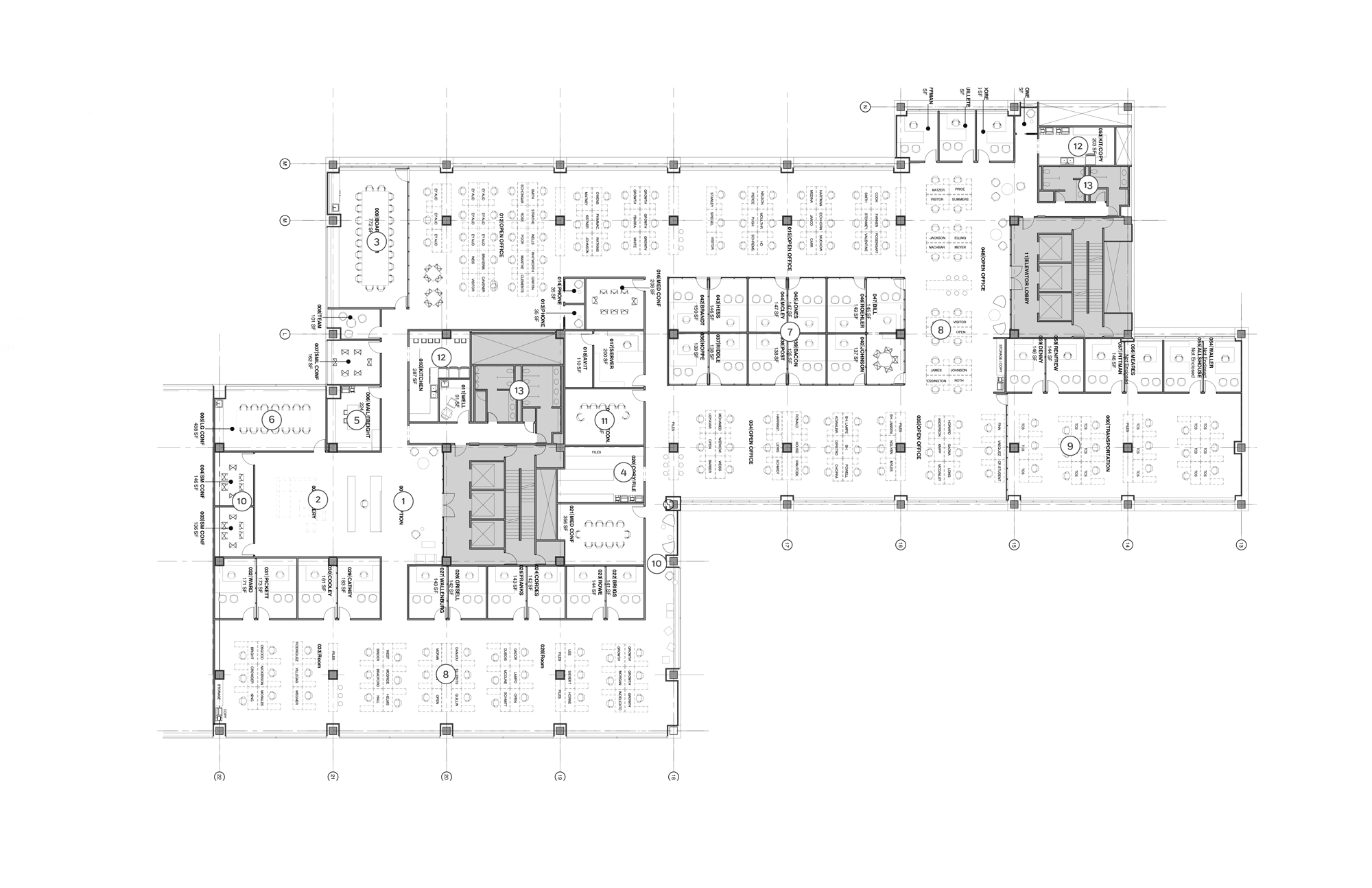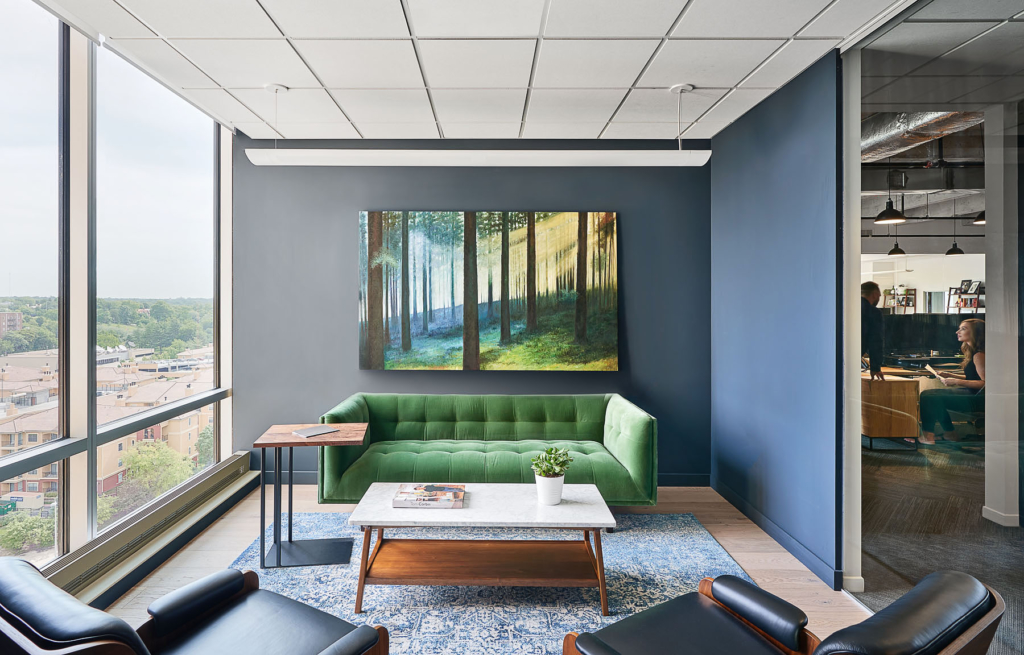Recent Project
Living Design
Workplace Design that Works
The abundance of content from designers, manufacturers, furniture dealers and product reps sharing their ideas, lessons learned and what’s next is staggering. Search for ‘workplace design trends’ in Google and prepare to be overwhelmed.
Our workplace experience spans a wide range of industry types – from a circuit board manufacturing facility, to headquarters for a capital investment firm and a frozen custard chain. Over years of creating workplace solutions, certain considerations have stood the test of time.
We’re not declaring the end of the open office, and this isn’t a synopsis of the top five search results. The following ideas are what we believe will continue driving workplace design well beyond 2019.
DATA-DRIVEN PROGRAMMING
Even in the most open or flexible work environments, you need a plan. Metrics play a more critical role in how we approach workplace design. Designers are paying more attention to the users in a space, the things that work and what needs improving. Multiple performance measures, like the Leesman Index or Cushman & Wakefield’s Global Occupier Metrics, help with collecting and evaluating data to define a successful programming strategy. To paraphrase Work Design Magazine, a square foot is still a square foot, but how we measure for success and utilize that space is dramatically changing.

WELLNESS
Workplace wellness is bigger than nap pods or employee gyms. Fitwel’s growing popularity has expanded the design approach to consider wellness at a spatial level. Air quality, natural daylight, water supply and building access are now part of how we define workplace wellness. This also influences specific design solutions. Natural materials like wood and stone increasingly dominate aesthetics. There’s no denying the benefits plant life can have on our health, either, and workplace design has kicked this up a notch. We’ve watched the escalation from the once-were potted office plants to full-scale living walls and indoor Zen gardens.
STORYTELLING
Furniture manufacturer Coalesse notes that “as more companies set up offices in older buildings and buildings that have been repurposed, they’re often eager to embrace the unique character and history those buildings have to offer.” We’re drawn to buildings for the stories they tell, and the possibility to weave multiple narratives together. It’s why so many design concepts pair phrases like “respecting the original architecture” with “integrating thoughtful branding solutions.” From potential tax benefits, to community revitalization and the impact on corporate culture, there is definite proven value in bringing new purpose to old buildings through workplace design.
RIGHT AT HOME, AT WORK
Whoever is trying to coin the term ‘resimercial’ has good reason for doing so. Residential design is quickly and steadily making its way into the places we work, from interior programming through furniture selection. Spaces for social gatherings and relaxation are as much priority as meeting space. Comfortable lounge areas, kitchens we wish we had at home, and indoor/outdoor entertainment are often highlight reels of workplace design. These amenities are big for culture and business output, too – a link can be drawn between productivity and employee comfort.

FLEXIBILITY
The open office is not dead, and private space is still relevant. Successful workplace solutions are flexible, employing a combination of both. The reason there’s so much clickbait backlash for open work environments is that, if designed poorly or without the necessary due diligence, open offices can damage productivity and frustrate employees. Collaborative, productive office design will continue to blend multiple space typologies that cater to employee workflows, future growth and a variety of operational needs.

Learn more about our approach to workplace design.